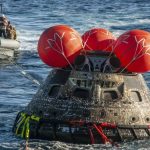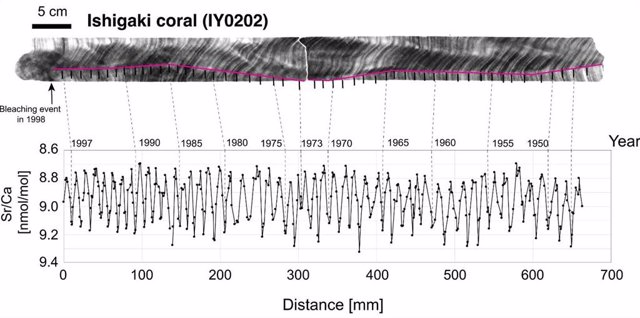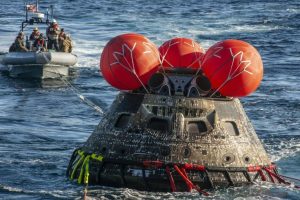A cross-sectional scan of coral reveals growth rings. These correspond to different years, so researchers can look for markers to see when certain atmospheric changes occurred. – 2022 YOKOYAMA ET AL.
July 5. () –
Traces of radioactive material in marine sediments and corals have made it possible to offer for the first time a strong quantitative definition for the beginning of the Anthropocene.
The Anthropocene is considered important by researchers in many fields as it marks a milestone in humanity’s impact on the Earth’s environment and ecosystem.
Researchers at the University of Tokyo combined nuclear fallout records from atomic tests present in ocean sediments and coral skeletons. These records show a clear change in the ocean environment before, during and after a period of worldwide atomic testing, which researchers have defined as the beginning of the Anthropocene.
The team, led by Professor Yusuke Yokoyama of the University of Tokyo’s Institute of Atmospheric and Ocean Research, investigated the seabed near Beppu Bay in southwestern Japan. They were looking for evidence of plutonium from nuclear bomb tests in the Pacific Ocean that took place more than 50 years ago, and other chemical footprints left by humanity.
“Beppu Bay is one of several areas around the Pacific that contain well-preserved records of humanity’s impact on the environment due to sediments that form layers on the calm seafloor. For example, the plutonium rain from nuclear tests in the mid-20th century is preservedYokoyama said. it’s a statement.
“Our task was to find clear indications of radioactive fallout from the 1950s to 1963, when testing largely stopped. We sampled the core from the Bay Area and there are clear signs of plutonium from the radioactive fallout. However, We also collected coral skeletons from Ishigaki Island, southwest of Okinawa, which contained radioactive fallout. Comparing the sediments to corals allows us to more accurately date the signatures we see in the sediments.”
Although sediment samples can record evidence of past environmental change, they are deposited in a disorderly manner and can be easily disturbed. This is why the team needed to cross-reference the core samples with coral, since coral, like trees, grows in such a way that its internal structure leaves distinct rings corresponding to each year of growth.

The reason both types of records are useful is that sediments tend to capture a wide range of environmental information but lack precision, and coral, thanks to its growth rings, can provide great historical precision but does not capture so much information about the environmental past. Thanks to this, the team found clear evidence in coral skeletons of radioactive fallout from 1954; other markers on that coral also found in the sediments meant that the wider range of chemical signatures in the sediments could be linked to that same year.
The reason Yokoyama and his colleagues are interested in finding geological and chemical records of radioactive fallout is that they are part of an effort to redefine how we refer to the modern age. Our period of history is widely known as the Holocene, dating back about 12,000 years.
Yet humanity’s unprecedented impact on Earth since the industrial age began has proven so monumental that researchers in many fields related to history, biology, atmospheric science, and more are seeking to create a precise new definition for this modern post-nuclear age, which they’re calling the Anthropocene.
“It was challenging to analyze the plutonium within our samples, as during the period in question, three tons of plutonium were released into the sea and atmosphere, but those three tons were dispersed far and wide. So we’re actually looking for incredibly small firms.Yokoyama said.
The research was published in ScientificReports.














![[Img #73837]](https://thelatestnews.world/wp-content/uploads/2024/09/Argentinas-first-electric-plane-is-getting-ready-to-fly-300x200.jpg)
Add Comment